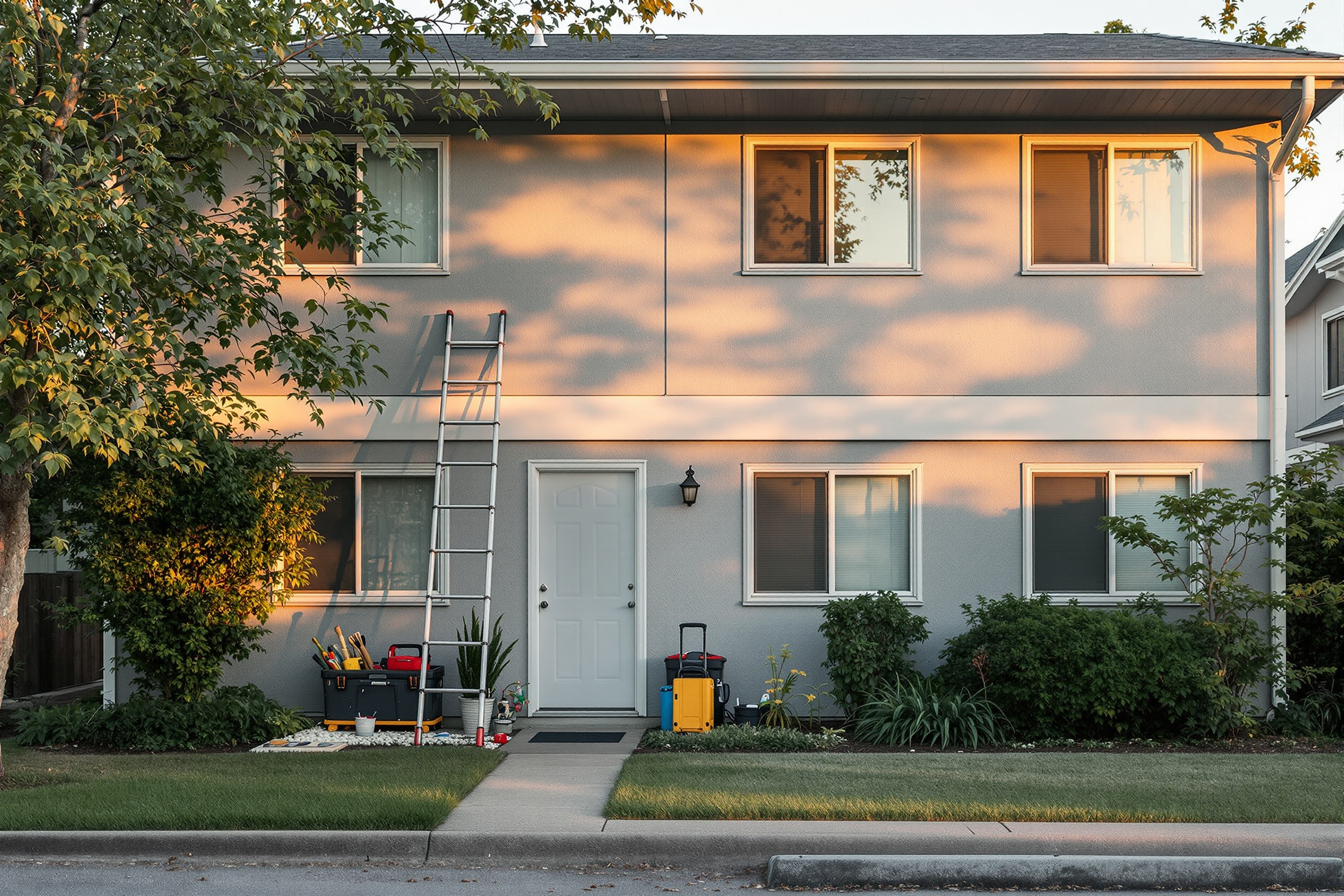When you need to request repairs from your tenant, doing so effectively and professionally is critical for maintaining a positive landlord-tenant relationship and ensuring the proper repairs are made quickly.
This article will explain the importance of sending a letter to request repairs to a tenant rather than making a verbal request and how this may impact a tenant’s security deposit.
You’ll also learn the distinction between normal wear and tear versus damage caused by tenants, what to include in the repair request, and best practices for creating and delivering the written request to your tenant.
Why Is It Important to Send Written Correspondence?
Sending a written notice to a tenant requesting repairs is better practice than making a verbal request. Having clear, written documentation of your request can be helpful if you’re unable to resolve the situation through dialogue or negotiation with the tenant.
In addition, a written letter reminds the tenant they are responsible for repairs and maintenance. It ensures they understand exactly what you expect from them.
Sending a formal letter also helps set specific expectations between you and your tenant. It clearly outlines the timeline for completing the necessary repairs and provides legal proof should there be any dispute over the cost or who is responsible for certain repairs.
How to Write a Repair Request Letter to a Tenant
Use a professional tone when writing a letter to request repairs. State clearly what needs repair, why it’s needed, and include a deadline for completing it.
Also, consider including a reminder that repairs may need to be completed for the tenant to remain compliant with their lease agreement.
When writing a letter to your tenant for repairs, you should include the following information:
- Date of the letter
- Your address and contact information
- Tenant name(s) and address
- Description of the issue(s) that needs repair
- Explanation of why the repairs are needed
- Date for completion of the repairs
- Request for written acknowledgment of receipt of the letter
- Additional relevant information (e.g., if you'd like to inspect the repairs)
- Notification of penalties if no response is received or repairs are not made within a specific amount of time (e.g., eviction proceedings)
- Information on the amount (if any) to be deducted from their security deposit
A Free Repair Request Letter Template
Here's a sample repair request letter from a landlord to a tenant:

Although writing a letter to a tenant requesting repairs may seem easy enough, there's a lot of information to include. Download a free sample letter template you can use when the situation arises. Click the link below for the format of your choice:
For the Word or Google Doc template, click on "File" in the top left-hand corner of the page, then select "Download." For the PDF, click the download arrow icon in the top right-hand corner.
Best Practices for Sending a Repair Request Letter
When sending a letter requesting repairs from your tenant, you want it to help you maintain a good relationship with your tenant and ensure the situation gets addressed in a timely fashion. There are a few best practices for landlords to follow when sending repair request letters.
Be Clear, Concise, and Specific
Be clear and concise about what repairs are required and why. Don't make assumptions about the tenant’s knowledge of the issue or their ability to fix it themselves.
Be specific about what needs to be done and provide detailed instructions if necessary. Be sure your expectations are reasonable and that any deadline for completion is clearly stated in the letter as well.
Provide Documentation
Whenever possible, provide documentation with your repair request letter. Photographs are especially helpful because they show the tenant what specifically needs to be repaired or replaced.
Any photographs you include should be clearly labeled so there is no confusion over which item needs attention. Documents such as inspection reports or maintenance logs can also help demonstrate why repairs are necessary. Include them when appropriate.
Be Courteous and Professional
Landlords need to be professional in all their communication with tenants, including letters requesting repairs. Avoid making accusations or using harsh language in your letter.
State what needs to be done and stick to those facts without making personal comments or judgments about the situation. If possible, offer suggestions for how tenants might make the requested repairs (e.g., “You may wish to contact a plumber for assistance with this issue.”).
Keep a copy of the letter for your records should the tenant fail to comply with your request or a future dispute arise. A written record can be invaluable if you have to take legal action against non-compliant tenants.
Remember, always remain professional in your communications with tenants and respect their rights as described by local and state laws. Taking proactive steps like sending repair request letters can help protect your property, your peace of mind, and your bottom line.
Normal Wear and Tear vs. Damage Caused by Tenants
The most common reason landlords request repairs from a tenant is for damages beyond normal wear and tear. Normal wear and tear is minor damage that occurs over time due to the regular use or aging of materials used in the building, apartment complex, or rental unit.
Normal Wear and Tear
Some examples of normal wear and tear include:
- Paint chips and scratches on walls
- Minor discoloration of carpets due to sun exposure
- Loose door handles and hinges
- Small cracks in tile or linoleum floors
- Accumulation of dust, dirt, and debris on windowsills
- Minor water damage from plumbing issues, such as leaking faucets or toilets
- Discoloration of grout around sinks, tubs, and showers
- Wear on cabinet doors from opening and closing them frequently
- Broken window panes or blinds caused by age or weather conditions
Tenant Damage and Destruction
Damage beyond normal wear and tear typically occurs when tenants do not take care of their rental units properly or when they willfully destroy property.
Examples of damage caused by tenants that would not be considered normal wear and tear in a rental property include:
- Holes punched or kicked in walls
- Missing or broken fixtures, appliances, and light switches
- Damage to carpets from pet accidents (urine stains and torn fibers)
- Broken windows or window panes due to tenant negligence
- Items damaged by misuse, such as furniture or tv stands, in a furnished rental property
- Unauthorized paint on walls or floors
- Burn marks on counters and flooring from irons, candles, or cigarettes
- Water damage caused by overflowing sinks or bathtubs
- Damaged doors and windows due to forced entry attempts by the tenant
- Clogged drains due to tenant negligence or misuse
If a tenant has caused significant damage to a property beyond what is considered normal wear and tear, it is generally a landlord’s right to require repairs at the tenant's expense.
However, before sending a repair request letter to a tenant, landlords need to check their rental agreement for any clauses about repairs made by renters during their tenancy.
Some rental agreements may stipulate that renters must repair any damages they cause during their stay on the property. In other cases, landlords may require that renters keep certain areas of the home in good condition (such as lawns, gardens, or walkways).
Any terms listed in the rental agreement need to be taken into account when making repair requests from a tenant.
Can Security Deposits Be Withheld?
In some situations, landlords may withhold part or all of a renter’s security deposit if they believe the damage was due to negligence on behalf of the tenant. Landlords should always document the damages before withholding any portion of the deposit.
However, withholding all or part of a tenant’s security deposit should only be done after sending an official notice requesting repair work and providing ample time for the completion of those repairs.
Be sure to review local and state landlord-tenant laws applicable to your rental property’s location. The legal resource website Nolo.com maintains a chart of state statutes, which includes issues such as returning a security deposit.
Before using a security deposit to pay for damage caused by a tenant, landlords may also wish to consult with a local real estate attorney or seek the advice of their property management company.







